The Story Of The School That Escaped The Nazis
Deborah Cadbury on how Bunce Court saved hundreds of refugee children
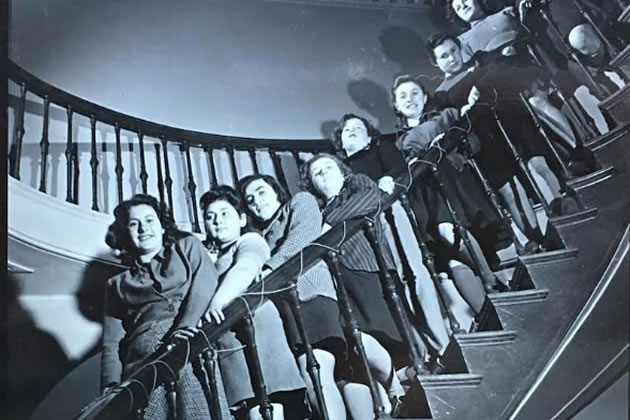 Picture: Courtesy of the Olner family
Picture: Courtesy of the Olner family
A chance encounter with one of the first child refugees on the Kindertransport out of Germany, led Chiswick author Deborah Cadbury on a historical, literary, and emotional journey.
Over three years ago, Deborah met immunologist Leslie Brent who had been a pupil at Bunce Court in Kent, a co-educational school set up as a safe haven for Jewish children fleeing Nazi Germany.
Bunce Court was a run-down manor house in Otterden, Kent, leased by schoolteacher Anna Essinger in 1933, who hatched a daring and courageous plan to save young Jews from persecution by smuggling them out of Germany.
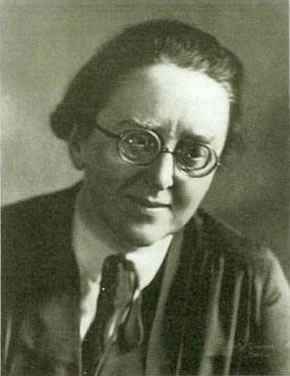
Anna Essinger
An established author, Deborah knew that she had stumbled upon an amazing story and set about researching the school and its extraordinary founder.
Deborah Cadbury will discuss her book, 'The School That Escaped The Nazis', with Alex Gerlis and Peter Bradley at the Chiswick Book Festival, on Saturday, 10 September, (details below)
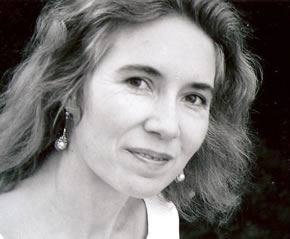
Deborah Cadbury
Anna Essinger had been running the successful Herrlingen boarding school in southern Germany, when in 1933, she was ordered to fly the Swastika over her school. She was also denounced by one of her staff for her 'unpatriotic 'views on education. It was at that point she became concerned for the safety of Jewish people in her community and resolved to get as many children as possible out of the country, hatching a plan to leave Germany in small groups.
"I thought I knew about the Holocaust but the more I heard about Bunce Court the more I realised there was so much more to write about it. It wasn't just a school, it stood for something greater, the story was so much bigger. I started to investigate and got drawn in," Deborah told Chiswickw4.com.
"It was clear to me that Leslie and all the former pupils had such admiration for this unknown heroine who they called Tante Anna. She was such a compelling character, she outwitted the Nazis and had amazing foresight, she was clever and shrewd, and yet she was tenderhearted and her purpose was to serve children. I was fascinated to find a strong female character from that period in history and I felt the story deserved to be told.
"Bunce Court stood for so much more than just academic education, she was trying to show them the best of humanity, to show them tolerance and kindness, as opposed to the descent into depravity and barbarity that some had witnessed before they escaped."
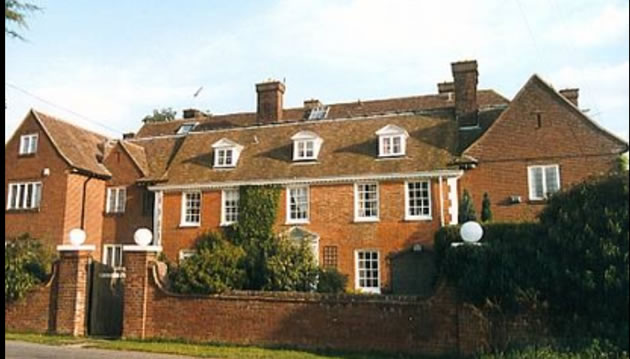
The main house at Bunce Court ( seen above) dates back to 1547, but prior to the Second World War, when Anna Essinger arrived on a fact-finding mission to locate a school, it was an old manor house owned by Lady Olga Manning, which had lain uninhabited for years.
Anna Essinger leased it with the help of sympathetic charities and with fees from German parents who entrusted her to take the children to safety.
As the eldest daughter of a large family she was used to a leadership role and Anna had also spent several years in the US living with her aunt. She returned to Germany with liberal views and progressive theories about education which she implemented in her boarding school.
It seems extraordinary that Ms Essinger could set off with a party of six teachers and six boys and girls, pretending to be on a field trip, right under the noses of the authorities. The advance party went ahead to Kent to settle in and make preparations for the arrival of others.
A group of 65 children followed a few weeks later. The trips had been meticulously planned for weeks but there was always the danger someone would betray them.
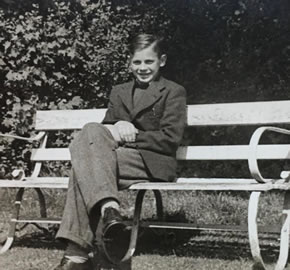
Sam Olner, who is featured in the book. Picture: Courtesy of the Olner family
After the initial relief of escaping to a safe haven life at Bunce Court had its challenges. There were problems with plumbing and electricity, there was a polio outbreak, and there was the constant pressure of getting funding for repairs and staffing- all the while increasing numbers of children were arriving.
The pupils had to take part in everyday chores and repairs, partly because Tante Anna believed that practical education was just as important, but also because there was no money to pay staff.
"There was a very strong emphasis on integration, this was a refugee school but really right from the off she wanted English spoken. They really admired English people because they felt they were their saviours - after all they were fighting Hitler, he had wrecked their homes, stolen their money, taken their families away.
"They wanted to be more English than the English, on the open day they had afternoon tea in the garden, cricket, performed English plays. They wanted to join the British Army to fight Hitler," says Deborah.
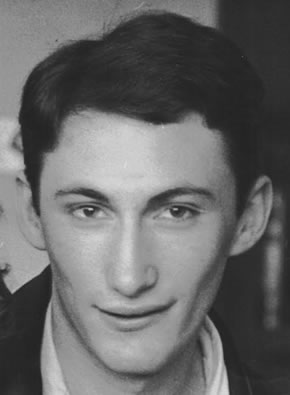
Sidney Finkel, who was orphaned during the war
Some local children from Kent did attend the school, and the Ministry for Education insisted that half the staff be English, but as time went by, more and more children arrived. After Kristallnacht, the UK agreed to accept 10,000 German children in kindertransports, and Bunce Court took as many refugees as possible. As Hitler invaded and annexed other countries, children started arriving from Austria, Poland, Czechoslovakia and Hungary.
The staff found themselves dealing with children suffering from PTSD, and many found it difficult to settle. One boy refused to eat vegetables because it reminded him of eating grass to survive, another attacked a gym teacher spitting and shouting until bursting into tears. Another little boy marched around the school with a replica rifle in case the Germans invaded.
Teaching staff who had themselves fled Germany came from a variety of backgrounds. The Maths teacher was a renowned astronomer, the music teacher had worked as a wildlife recordist.
Anna Essinger was hearing increasingly appalling news from Germany. She tried to allay the fears of the children by keeping them occupied.
"The emphasis on practical tasks, many of the pupils said it helped them mentally. If you could see that you'd grown carrots or repaired something, when your world had been smashed to pieces, it helped. The emphasis on integration, on being part of a community, where everyone was valued, that helped.
"It sounds almost brutal to us today, we know much more about trauma then they did then, but the narrative was, "it's in the past, tomorrow is another day, let's make a future for you that your parents would be proud of.' And because the teachers were almost like parents and helping them, and with so much to focus on, very practical matters , a lot of the kids said this approach really helped them, " said Deborah.
"The wave after wave of children mirrored the changing catastrophies on the continent, there were the years of persecution before the War and then the children who had experienced their world turning upside down, losing their parents, families disappearing.
"The book is told from their perspective, as to how they were understanding the Holocaust and how they pieced things together, what was happening to them, their parents, and the final revelations about what was going on in the camps."
Shortly after Deborah's book was commissioned the UK went into lockdown, and she was obliged to carry out most of the research online or by telephone. She contacted several former pupils of Bunce Court, who remain a tight-knit community, full of admiration for Anna Essinger.
"I carried out a lot of interviews on the phone and down the line. It was difficult as the former pupils were sharing deeply personal memories, and had undergone a lot of suffering. I think I contacted about twenty people in all and gradually pieced their stories together.
The stories include those of Sam Olner , Sidney Finkel and Anna Rose , three Polish survivors. Sam survived living as a farmhand as a Polish boy. He had witnessed the liquidation of the Bobowa ghetto where he lived and survived by hiding on the roof, watching people being driven away on trucks.
Sidney Finkel survived incarceration in concentration camps. The book tells of a poignant encounter in the camp between Sidney and his father during which the boy realised with horror that he felt no emotion. He believed that his experiences had stripped away his humanity and left him without a moral compass.
Anna Rose was hidden along with her brother Arthur in a house, ordered not to leave the room and to speak only in whispers. The children frequently had to run to a basement hiding place when the Gestapo appeared, hunting down those who had escaped the round-up. Her parents were hidden in a hole in a wall in another building and were believed to have perished when the Nazis discovered their hiding place and sealed off the house.
Many of the children of Bunce Court went back to Germany after the World War II trying to piece together their fragmented lives. Some never found out what happened to their parents.
"It must have been incredible going back and seeing their own country bombed to bits and piecing together the fragments of their childhood. But the school had helped build up their emotional reserves. Anna Essinger really created a 'can do spirit', it helped to make those emotionally wrecked kids feel they could cope."
Deborah researched Anna Essinger through personal diaries, and her writings on education. She believes she was a woman ahead of her time, and some of Anna's educational theories are now widely used. Three schools in Germany have been named after her.
" I was very touched by her story, she was a clever woman and she could have saved herself and her family but she chose to save as many of pupils as she could, she gave them something to live for on their own terms."
Her achievement is all the more impressive as Anna Essinger was slowly going blind. By the end of her life she was cared for by her sister and some of the pupils who came back to visit, grateful for her care. She had been short sighted all her life and her thick lenses had given her a bookish and somewhat stern demeanour.
Bunce Court had to move premises when it was requisitioned by the British Government during the War, and the school relocated to Shropshire.
The original Bunce Court building now a private home. The school closed in 1948.
Many of its past pupils went on to have very successful careers, including Frank Auerbach (artist), Leslie Brent (immunologist), and Richard Sonnenfeldt, who became chief interpreter for the US delegation at the Nuremberg Trials.
Deborah believes that it is time to honour more women from history whose contributions have been unsung.
"I felt like the pupils that she deserved more recognition, we need to hear more about women in history.
The school in Herrlingen, Germany that she left behind, survived against the odds, although its population at one stage fell from 100 to 25 pupils.
Those who passed through the doors of Bunce Court have only good memories of their time there. It was described as more like "a large family not like an institution."
Another description was that it was " ..more than a second home. It was a way of life, a state of mind..."
Deborah Cadbury will discuss her book, along with former Labour MP Peter Bradley, (The Last Train) at a session chaired by Alex Gerlis, in the Andrew Lloyd Theatre, Arts Education, Bath Road, at 11.45 a.m. on Saturday, 10 September. Tickets £8.00.
The Chiswick Book Festival is a non-profit-making community event that raises money for charities: St Michael & All Angels Church, which hosts the Festival, and three reading charities - Doorstep Library, InterAct Stroke Support and Read for Good.
The event runs from 7-14 September and full details and ticket information can be found on the festival website.
Anne Flaherty
This page is sponsored by Express Property Services who support community initiatives in Chiswick
September 2, 2022
